Victor Hugo: Everyone’s Favorite French Romantic

Even people who aren’t into literature know the name Victor Hugo.
Although less critically acclaimed than fellow French novelists like Balzac or Stendhal, Victor Hugo novels continue to resonate with readers around the world. Thanks to the various stage and film adaptations of his most famous novels, the modern world is being introduced to this Romantic literary giant in a whole new light.
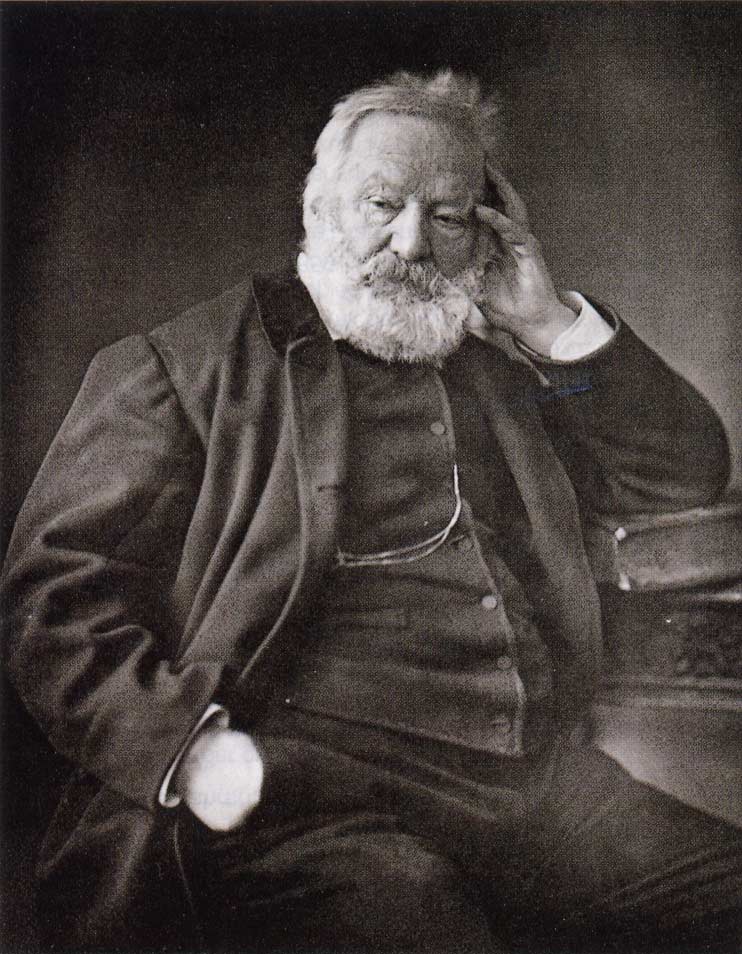
Victor Hugo, via Wikimedia Commons
For those interested in learning more about Hugo, read on! We’ll explore this great Frenchman’s long and turbulent life as well as introduce you to some of his finest works of fiction.
Victor Hugo’s youth and education
Victor Hugo was born on February 26th, 1802, in the French city of Besançon near the Swiss border. Hugo was the third son born to Joseph Léopold Sigisbert Hugo and Sophie Trébuchet. Hugo’s father was a freethinking general under Napoleon, but his mother was a staunch Catholic Royalist.
As you can probably already tell, the young Hugo heard many heated political discussions while growing up. Indeed, the whole of France was embroiled in political debates during Hugo’s formative years. Napoleon rose to power just two years before Hugo was born, and the Bourbon Monarchy was restored when Hugo reached the age of 13.
In addition to gaining an understanding of politics early on, Hugo moved around a great deal due to his father’s important role in the military. Hugo spent numerous months in cities like Madrid and Naples, but he always returned to his home base in Paris.
Between 1815 and 1818, Hugo studied law in Paris. Although he obtained a law degree, Hugo wasn’t much interested in legal matters and wasn’t a particularly strong student.
It was around 1816 that Hugo first showed a serious interest in making a living from writing. Historians have found numerous notebooks from this year in which the young Hugo wrote poems, a play, and numerous elegies. With his mother’s encouragement, Hugo founded a literary journal called Conservateur Littéraire in 1819 in which he published some of his own poems and essays. Unfortunately, Hugo’s mother passed away in 1821 and didn’t live to see her son’s greatest literary achievements.
Victor Hugo poems and plays
Hugo married his childhood friend Adèle Foucher in 1822 and eventually had five children with her. In that same year, Hugo published his first full book of poems called Odes et poesies diverses. All of the poems in this book are extremely royalist, and they soon attracted the attention of Louis XVIII. The king actually sent Hugo a pension in gratitude for these odes.
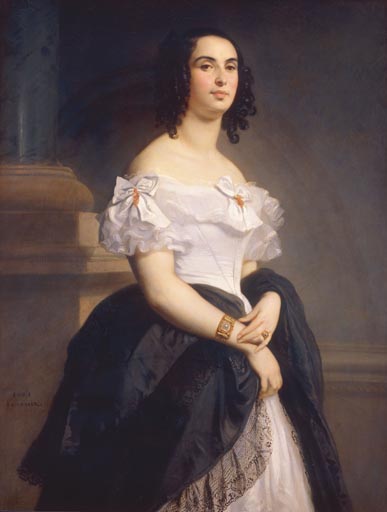
Hugo’s wife, Adèle Hugo, by Louis Boulanger, 1839, via Wikimedia Commons
Only one year later, Hugo published his first novel, Han d’Islande. This work instantly impressed the prominent journalist Charles Nodier. Nodier wrote a favorable review of the novel and helped Hugo connect with writers sympathetic to the budding Romantic movement. Hugo met with Nodier and other writers near the Bibliothèque de L’Arsenal so frequently that they came up with a nickname for themselves: Cénacle.
From royalist to liberal
From this point on, Hugo’s political views began to sway more to the left. In 1823, Hugo started publishing a politically moderate journal called Muse Française. Between 1824 and 1829, Hugo produced more poetic collections that dealt explicitly with Romantic themes such as apocalyptic terror, the splendors of the Orient, and ecstasy.
The most notable work from this period in Hugo’s career was probably the verse drama Cromwell (1827). This drama, which deals with Oliver Cromwell’s internal conflicts after being offered the kingship in England, shows Hugo’s indebtedness and admiration for Shakespeare. Today, many people just read Hugo’s “Preface” to Cromwell, which serves as a key manifesto in the French Romantic movement.
With the publication of poems like “À la Colonne,” Hugo began openly moving further away from his youthful royalist sympathies. He began meeting with liberals working at the newspaper Le Globe frequently, and he even published the scandalous play Marion de Lorme (1829) that mocks Louis XIII.
In 1830, Hugo premiered his play Hernani, which takes place in Spain and follows two noblemen and one bandit in pursuit of a young woman. The play is well known today for causing a major stir after its premiere in Paris. French Classicists saw the play’s themes and defiant poetic meter as a direct attack on their ideals. Hugo saw his play as a major victory for the Romantic movement, especially after artists like Hector Berlioz and Théophile Gautier openly supported the drama. Today, most people only know of the Italian composer Verdi’s operatic rendition of the drama Ernani.
Victor Hugo novels and poems in the productive 1930s
Although Hugo was well known in theaters of Paris, he didn’t have a wide readership until 1831. That’s the year he published the historical novel Notre-Dame de Paris (usually published in English as The Hunchback of Notre Dame).
The novel takes place in medieval Paris and showcases Hugo’s deep humanitarian beliefs. The novel critiques both how the church (in the character of the Frollo) and the military (with the character of Phoebus) treat marginalized people such as the hunchback Quasimodo and the Gypsy Esmeralda.
Of course, many people nowadays know of The Hunchback of Notre Dame thanks to Disney’s 1996 animated musical adaptation.
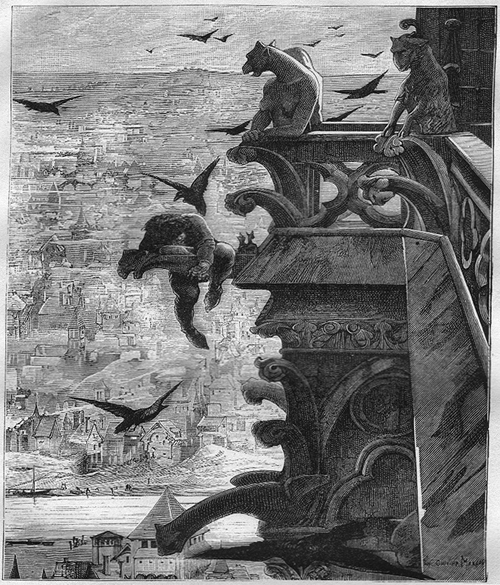
Illustration of “Quasimodo” by Alfred Barbou, from Hugo’s Hunchback of Notre-Dame, via Wikimedia Commons
After the success of Notre Dame, Hugo turned his attention to poetry again. Some of Hugo’s finest Romantic poems were produced during the 1830s, including:
- “Les Chants du crépuscule“
- “Les Voix intérieures“
- “Les Rayons et les ombres“
Hugo strove to echo the sentiments of all French people he saw around him in his life. In addition to personal reflections, many of Hugo’s poems dealt with the plight of French workers, the July Revolution, and religion.
It was also during this time that Hugo began a lifelong affair with the actress Juliette Drouet. Many of the plays Hugo wrote during the 1830s were specifically designed to give Drouet a staring role. Drouet wasn’t a very talented actress, but she was devoted to Hugo till her death in 1883. A few plays Hugo wrote during this time period include Le Roi s’amuse (also reimagined by Verdi in the opera Rigoletto) and Lucrèce Borgia.
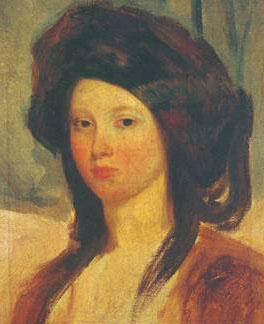
Hugo’s mistress, Juliette Drouet, as Princess Negroni by Charles-Emile-Callande de Champmartin, via Wikimedia Commons
Great tragedy strikes Hugo’s family
Hugo was honored by the French Academy for his poetry in 1841. In 1845, the Chamber of Peers honored Hugo as well. Despite these great accomplishments, this was one of the darker periods in Hugo’s life. Both Hugo’s daughter, Léopoldine, and his son-in-law, Charles Vacquerie, suddenly died in 1843. The two were just married and went for a boat ride on the Seine in the city of Villequier. Sadly, the ship capsized and Léopoldine fell into the river. Her husband dived in to try and save her, but he too was pulled into the water. Léopoldine was 19 and Vacquerie was 26.
Hugo wrote many introspective poems to overcome this tragic loss, later published in the collection Les Contemplations (1856). These extremely powerful poems deal with Hugo’s personal struggles with faith, doubt, and loss following the death of his beloved daughter.
Hugo in exile
After Napoleon III came into power in 1851, Hugo fled to Brussels and then to England. He remained in exile for 20 years.
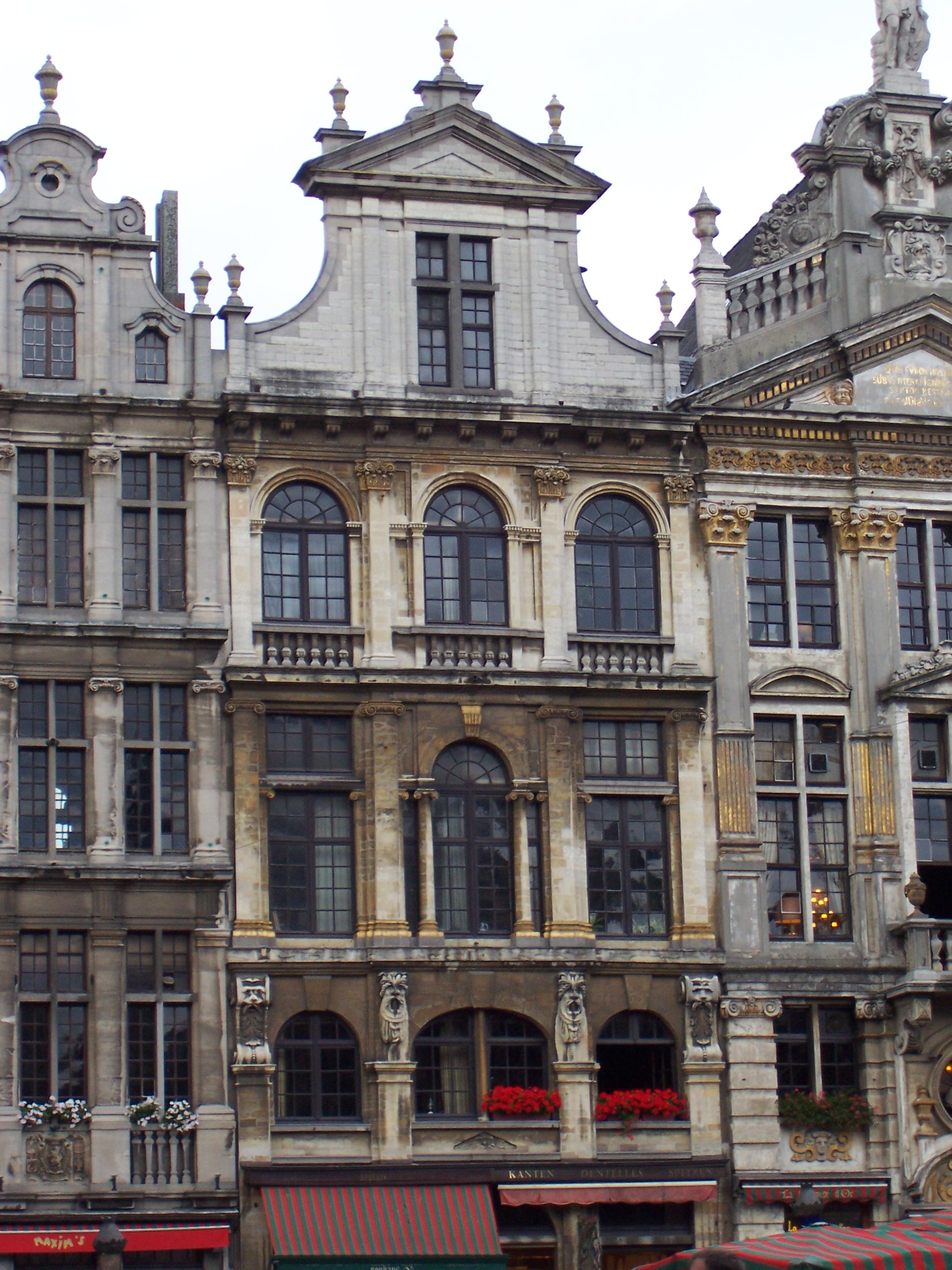
Brussels Le Pigeon, where Hugo lived in exile, via Wikimedia Commons
Throughout this period in Hugo’s life, he wrote some of his most original poetry and prose. Many critics consider his politically charged poems in Les Châtiments (1853) to be some of the most ferocious satirical poems in all of French literature. Hugo also worked on numerous metaphysical epic poems during this time, including La Fin de Satan and Dieu.
Les Misérables by Victor Hugo
Of all of the Victor Hugo novels, it was Les Misérables (1862) that cemented his name as a major global writer. A bestseller in its own day, Les Misérables focuses on a convict named Jean Valjean who was imprisoned for stealing some bread. Valjean eventually gains his freedom and becomes a successful industrialist. However, the sneaky detective Javert pursues Valjean throughout this novel and forces the former convict to make extremely difficult moral decisions.
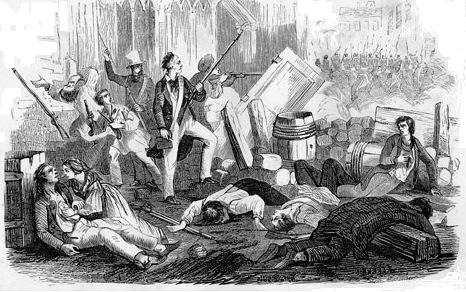
By E. Frère (wood engraving, designed by Beval) [Public domain], via Wikimedia Commons
Les Misérables is celebrated by literary critics for its detailed depiction of Parisian life from 1815 to the June Rebellion of 1832. In addition to its depictions of the Parisian underworld, this novel is admired for its themes of redemption and the constant struggle between good and evil.
Les Misérables is now one of the most popular stage musicals ever produced and has been made into a major film staring Hugh Jackman and Anne Hathaway. Check out one of the most famous songs from this musical below:
Hugo’s return to Paris and death
Only after the Third Republic was established in 1871 did Hugo return to his beloved Paris. Although he was welcomed back with open arms, Hugo was extremely somber. He had lost his wife in 1868 and two of his sons died in the early 1870s. Hugo then suffered a stroke in 1878.
He passed away in 1885 in his home on the Avenue d’Eylau, which has since been renamed Avenue Victor-Hugo. The great author was given a national funeral service under the Arc de Triomphe and was buried at the Panthéon.
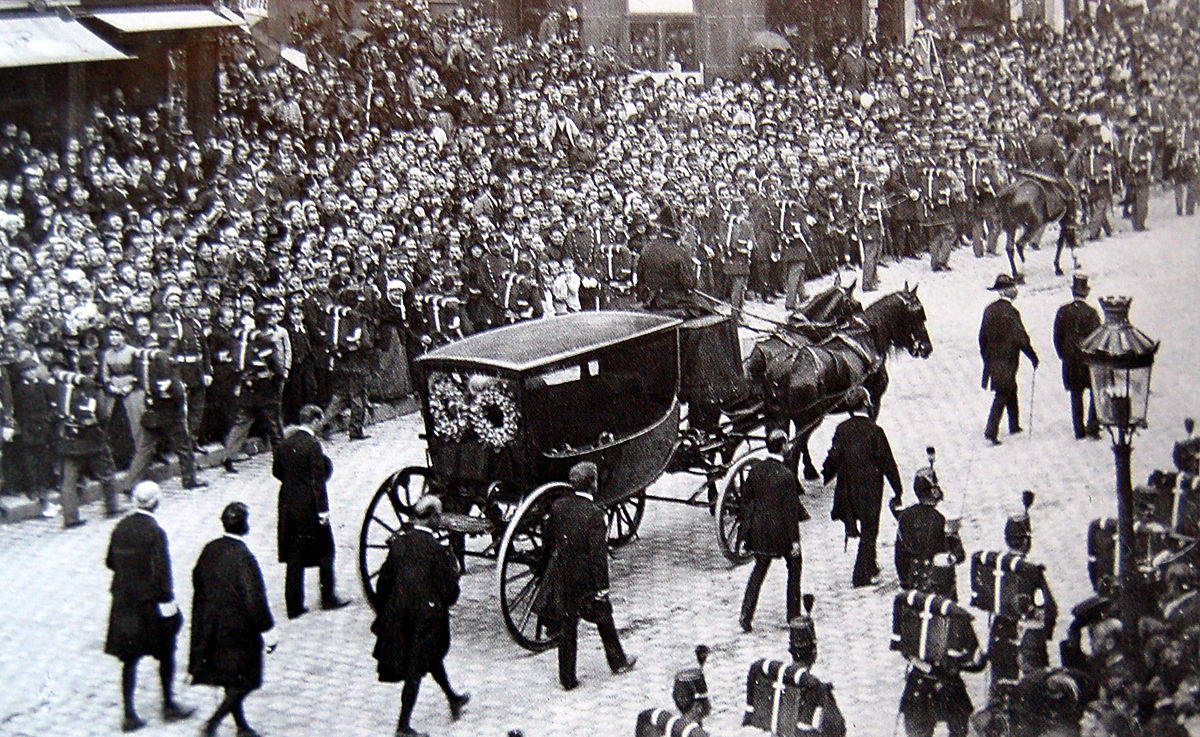
Victor Hugo’s burial (1885), via Wikimedia Commons
Victor Hugo: Still one of France’s most popular writers
Most English speakers only know Hugo for his novels, but he is still known in France mainly as a poet and critic. Hugo’s immense literary output was truly astonishing. Most days, Hugo wrote at least 100 lines of verse and 20 pages of prose. Much like the prolific novelist Charles Dickens in England, Hugo appeals to both literary professors and average readers.
Hugo is undeniably one of the most important French writers of the 19th century, and he remains one of the most widely read French authors of all time.







Leave a Reply
Be the First to Comment!